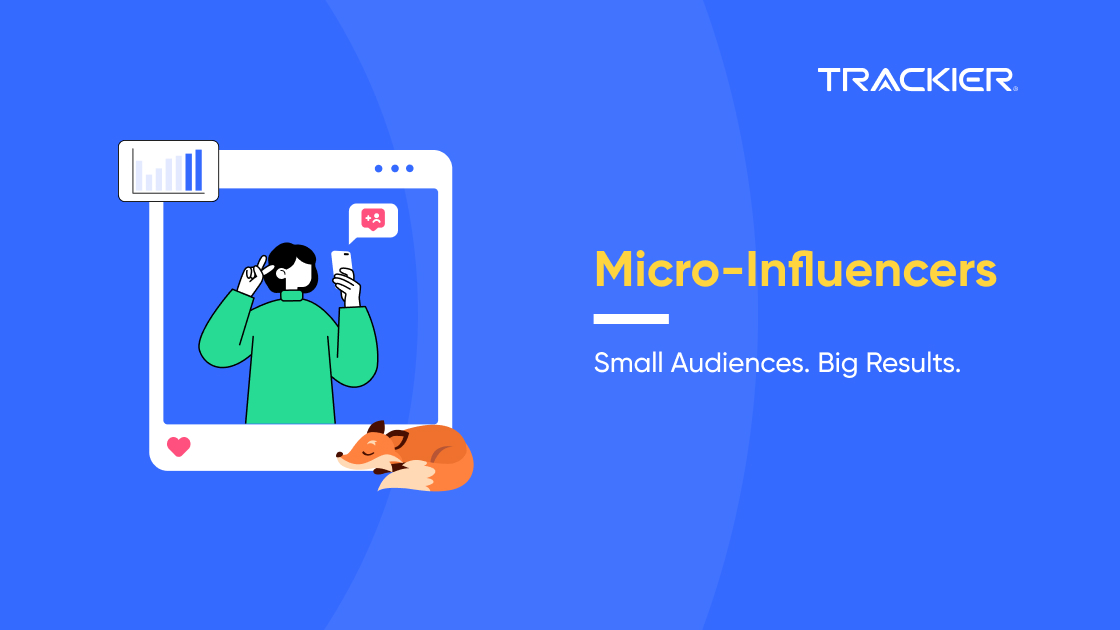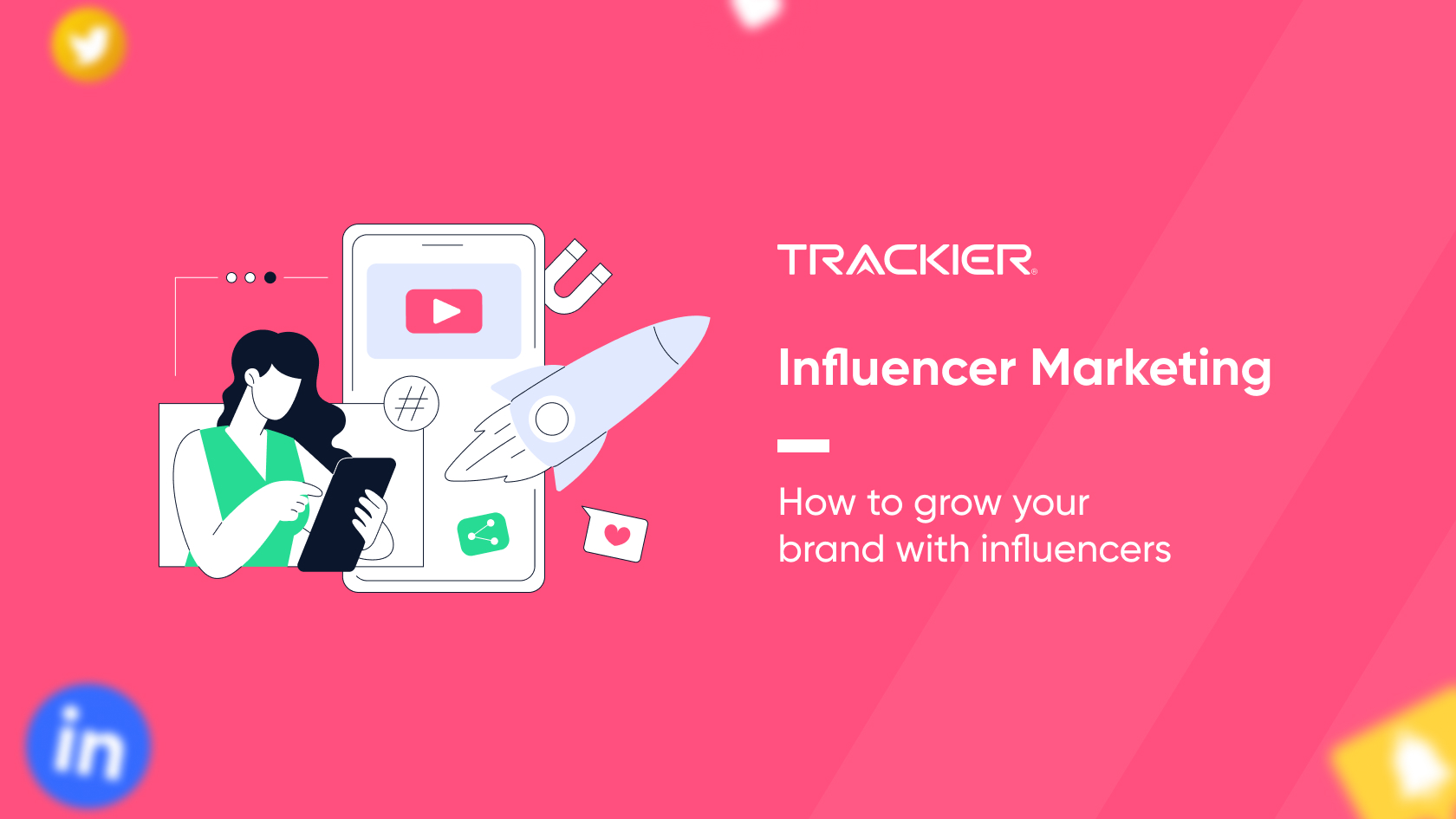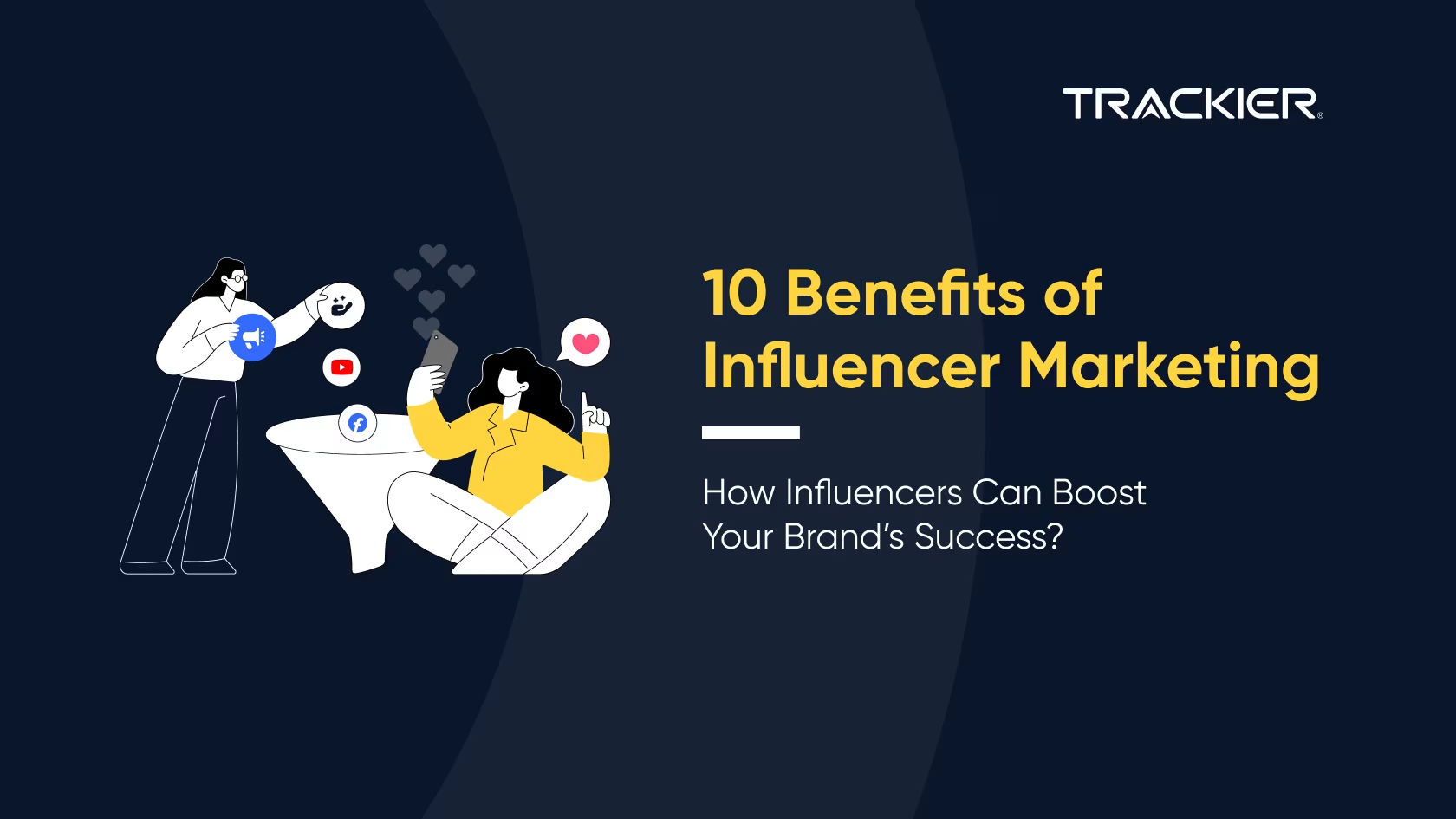In today’s digital-first marketing world, brands seek strategies that create genuine relationships with their audiences. Micro influencer marketing is one of the best and highly effective approaches.
An individual with a following of almost 1,000 to 100,000 followers is what we call a micro influencer. These influencers typically hold a niche audience that is highly engaged and also values brand authenticity over anything.
Unlike macro influencers or celebrities, a micro influencer builds stronger, more personal relationships with his/her followers, leading to increased audience engagement and trust.
This article explores the role of a micro influencer in social media marketing strategy, their benefits for brand engagement, and how businesses can maintain long-term influencer partnerships while optimizing influencer marketing strategies.
Micro Influencers in Brand Engagement, What Role Do They Play?
What/Who is a Micro Influencer?
A micro influencer is a content creator who has a dedicated following within a specific niche. Whether they focus on beauty, fitness, technology, or performance marketing, their audience sees them as relatable and trustworthy sources of information. Unlike macro-influencers, their recommendations feel more like a friend’s suggestion rather than an advertisement.
The Shift Toward Brand Authenticity in Micro Influencer Marketing
Traditional ads are increasingly becoming the focus of skepticism and criticism amongst consumers today. According to a study, 86% of consumers prefer an authentic and honest brand personality. Micro influencers contribute to brand authenticity by engaging with influencer audiences in a way that fosters trust and transparency.
Micro influencers often create user-generated content that aligns naturally with their existing social media content strategy, making their promotions feel seamless rather than forced. Their audiences are more likely to engage with and act upon their recommendations, which significantly enhances engagement metrics for brands.
Benefits of Micro Influencer Partnerships
Improved Audience Engagement
A micro influencer typically achieves higher engagement rates than larger influencers. According to a study by Markerly , influencers with under 10,000 followers typically achieve a 4% engagement rate on average, whereas those with over a million followers see rates drop below 1%. The stronger community bond micro influencers maintain ensures that likes, comments, and shares are more frequent and meaningful.
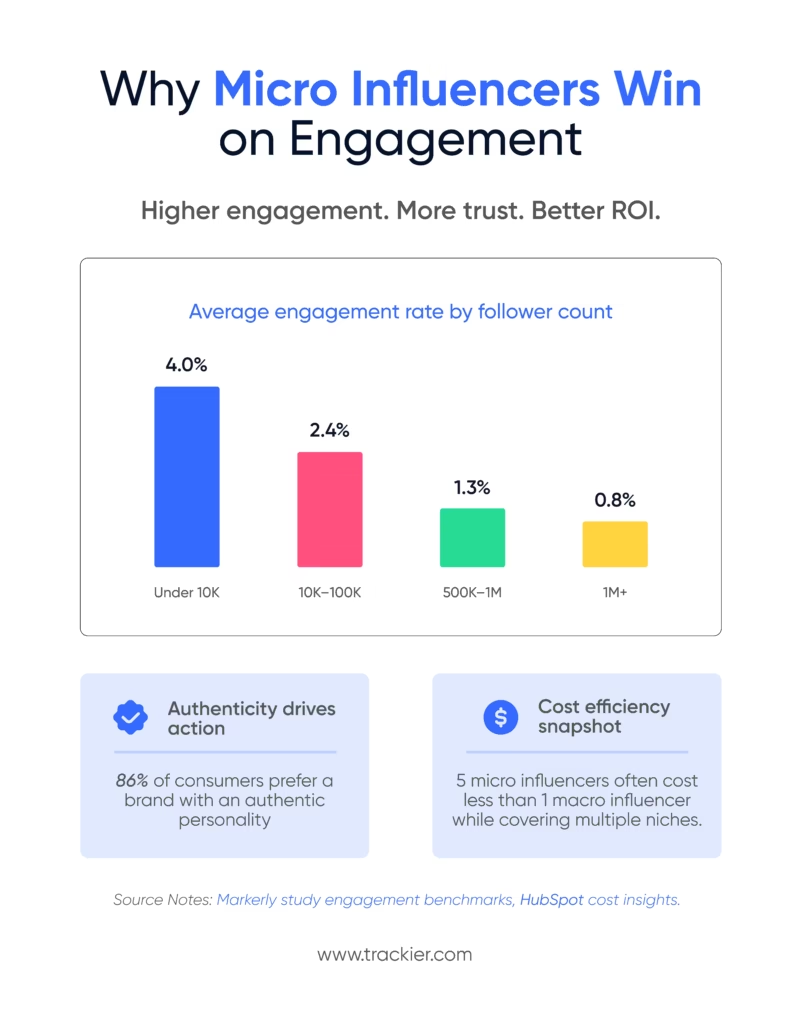
Budget Friendly Influencer Marketing
Micro influencer partnerships offer a major advantage which is cost efficiency. According to a HubSpot report, brands can partner with multiple micro influencers for the cost of a single macro-influencer. This allows businesses to reach diverse audience segments while maximizing their marketing budgets.
Access to Niche Markets
Micro influencers specialize in specific content areas, which means brands can leverage them to target highly specific demographics. This approach is particularly valuable for performance marketing and affiliate marketing companies looking to reach potential customers with precision.
By partnering with micro influencers, brands ensure that their message reaches engaged, interested audiences rather than being broadly distributed with minimal impact.
Strategies for Effective Collaboration with a Micro Influencer
Identifying the Right Influencers for Your Brand
Selecting the right influencers is key to the success of any social media marketing strategy. Businesses should consider:
- Brand Alignment:
Ensure the influencer’s content aligns with the brand’s values and objectives.
- Engagement Metrics:
An active and involved audience can be easily spotted by high engagement rates.
- Follower Demographics:
Use analytics tools to determine whether their audience matches your target audience.
- Content Authenticity:
Review past collaborations to assess their approach to sponsored content.
Social media influencer marketing management platforms like Trackier can help brands analyze engagement metrics and optimize influencer marketing strategies to ensure successful partnerships.
Building Symbiotic Relationships
A successful influencer partnership goes beyond a single sponsored post. Brands should focus on maintaining long-term influencer partnerships by offering value to influencers. This can include:
- Offering fair compensation
- Featuring influencers in brand campaigns beyond social media
- Supporting their content creation efforts
- Providing access to products that is exclusive
This approach not only strengthens relationships but also ensures continued audience engagement and brand loyalty.
Encouraging Creative Freedom
One of the most common mistakes brands make is controlling an influencer’s content too strictly. Influencers have built trust with their audiences because of their unique style and authenticity. Allowing influencers to integrate branded content naturally within their existing social media content strategy leads to more effective results.
Micro Influencer Campaigns: Measuring the Impact
KPIs or Key Performance Indicators to Monitor
Brands need to track various engagement metrics to assess the effectiveness of their micro influencer campaigns. Some key KPIs include:
- Engagement Rate:
Likes, comments, and shares indicate how well content resonates with the audience.
- Website Traffic:
Track referral traffic from influencer-generated content.
- Conversion Rates:
Measure how many leads or sales result from influencer partnerships.
- Brand Mentions:
Analyzing organic mentions helps evaluate brand visibility and perception.
By continuously monitoring these KPIs, brands can refine their influencer marketing strategies for better performance.
Gathering and Analyzing Feedback
Beyond numerical data, qualitative feedback is crucial. Brands should collect insights from both influencers and their audiences to understand the campaign’s impact. Questions to consider:
- What improvements can be made for future campaigns?
- Was the partnership viewed as genuine by the audience?
- Which content resonated the most with your target audience?
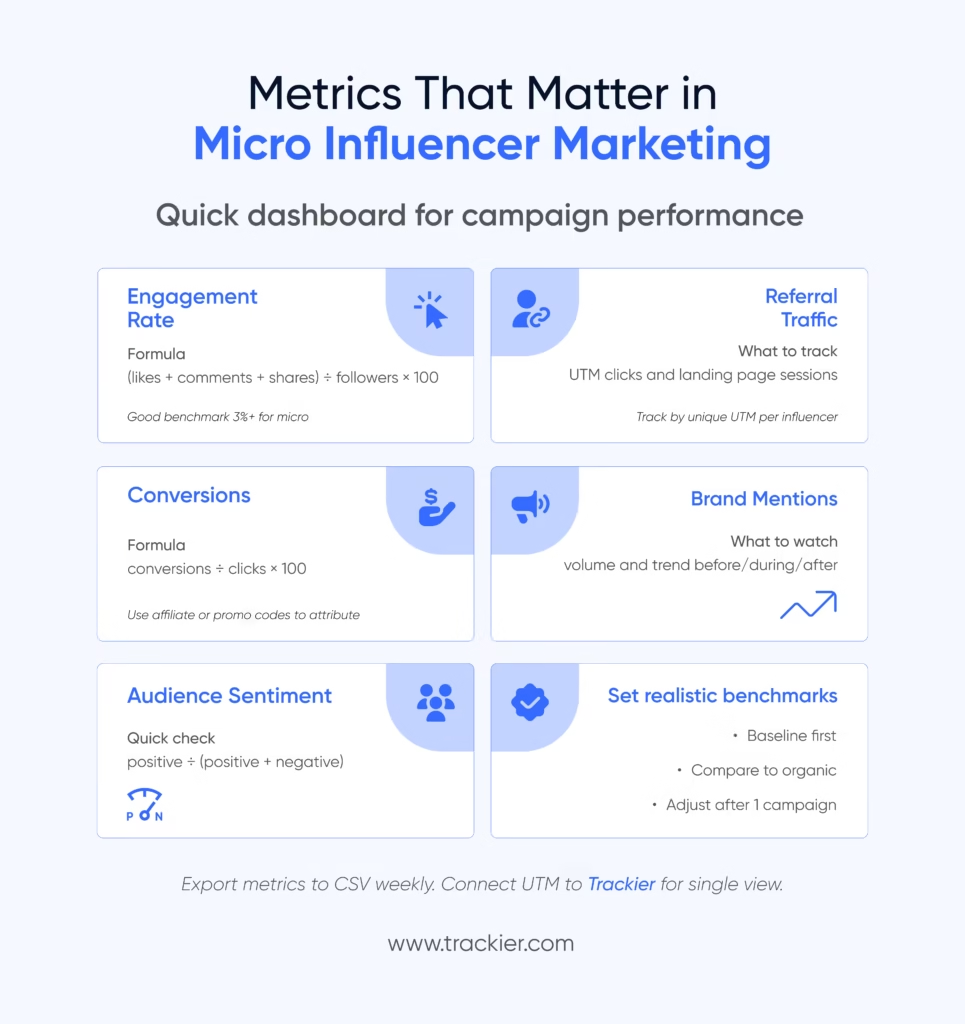
How Trackier Supports Micro Influencer Marketing Success
Trackier offers a complete partner marketing platform that helps brands simplify influencer outreach, monitor engagement metrics, and enhance marketing campaigns. Whether brands are looking to enhance their social media marketing strategy or build long-term influencer partnerships, Trackier’s data-driven tools help businesses maximize their influencer marketing efforts.
With its analytics and automation capabilities, Trackier enables brands to:
- Identify high-performing influencers
- Track campaign ROI
- Optimize influencer marketing strategies for continued success
By integrating Trackier into their influencer programs, brands can build data-backed partnerships that drive brand engagement and authentic audience relationships.
Key Takeaways
A micro influencer plays a crucial role in modern digital marketing by building authentic brand engagement and creating strong audience connections. With higher engagement rates, cost-effective campaigns, and access to niche markets, they offer a valuable opportunity for brands in the affiliate, partner, and performance marketing industries.
By selecting the right influencers, developing long-term partnerships, and measuring success through engagement metrics, brands can create impactful brand engagement that drives lasting results. Taking advantage of the right tools, like Trackier, ensures that brands can track, optimize, and refine their social media content strategy to achieve maximum success in influencer marketing.
As influencer marketing continues to grow, micro influencers remain a key strategy for businesses looking to engage with influencer audiences authentically and effectively.
Hungry for more?
Sign up for our weekly newsletter to get tips like these delivered, straight to your feed.
FAQs
1. How do micro influencers contribute to stronger brand engagement compared to traditional ads?
Micro influencers foster brand engagement by building authentic, two-way conversations with their niche audiences. Unlike traditional ads that often feel intrusive, micro influencer content blends naturally into the audience’s feed, increasing trust and interaction. Their recommendations are perceived as personal endorsements rather than paid promotions, which significantly boosts audience responsiveness.
2. What role does audience trust play in brand engagement through micro influencer marketing?
Audience trust is the foundation of brand engagement in micro influencer marketing. When followers believe in the influencer’s authenticity, they are more likely to engage with branded content, try recommended products, and share positive experiences. This organic advocacy creates a ripple effect that strengthens the brand’s credibility in the long term.
3. How can brands maintain consistent brand engagement in long-term influencer partnerships?
To maintain brand engagement over time, brands should focus on building mutually beneficial relationships with influencers. This includes fair compensation, creative freedom, ongoing collaboration in campaigns, and exclusive product access. Long-term partnerships ensure that brand messages are reinforced consistently, leading to deeper audience loyalty and engagement.
4. What metrics best measure the success of brand engagement in micro influencer campaigns?
Beyond likes and comments, the most telling brand engagement metrics include click-through rates, repeat interactions from followers, brand mentions across multiple posts, and conversions driven by influencer referrals. Tracking these deeper metrics helps brands understand how well the influencer’s audience is moving from awareness to active brand participation.
5. How does creative freedom for influencers enhance brand engagement?
When brands allow influencers creative control, the resulting content aligns better with the influencer’s natural style, tone, and storytelling. This authenticity resonates more with their audience, making branded messages feel organic. As a result, followers engage more actively because they see the content as genuine rather than scripted advertising.

